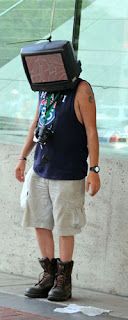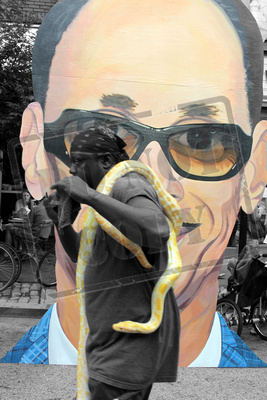When I was skimming headlines on msn.com last night, I was
two stories down before my heart skipped a beat. Uncle Lionel Batiste is dead.
Wait … what? I had to back up and read it again. Lionel Batiste. I know him!
To be honest, I don’t actually know Lionel Batiste, a huge
figure in the New Orleans music scene, but he made a big impression when I ran into him about two years ago. As I was entering the courtyard of the legendary
Preservation Hall to meet up with my jazz tour, he was finishing up a photo shoot.
Most of my family and friends know that I adore the music
and culture of New Orleans. I’m also a huge fan of Tremé, the HBO series about
the city, so I immediately recognized Uncle Lionel and his Tremé Brass Band
drum.
All I could think of was getting a picture of
that drum because I was certain that I would never come across anything that
screams New Orleans like that beat up instrument. Had I known at the time that
Uncle Lionel had used his drum to keep himself afloat in the post-Katrina
floods, I probably would have passed out on the spot.
As I stood there trying to work up the courage to ask
permission to take a picture, Uncle Lionel was packing up his things. I knew
that he’d be gone in a few moments.
What if he thought I was crazy for asking? What did it
matter since I’d never see him again? What if he said no? And why were the
other few guests meandering around looking more interested in starting the jazz
tour when a living, breathing musical giant was standing right in front of
them?
Ah, what the hell? “Hi, do you mind if I take a picture
of your drum?” I practically whispered, and my heart stopped as I waited for
his response.
Slowly, he turned around and picked up his drum. Oh, no, you
idiot! Why didn’t you just walk over and take the damn picture before he had a
chance to move the drum? I can’t believe I upset him so much that he’s going to
hide it. Now I’ll never get my shot!
Suddenly, he turned to face me and struck a pose with the
drum. This was too good to be true! My heart resumed beating and began to pound
furiously. I only had seconds to get the shot. I was looking straight into the
sun. I was too close to get a full body shot.
He started to lower the drum, and I snapped as quickly as I
could, praying for the best. Then, despite his age and frail build, he disappeared
with his drum in an instant.
I spent the next few minutes willing my heart back to its
normal pace, trying to look nonchalant about my run-in with a legend. Inside
the tiny, dark hall, I struck up a conversation with the photographer, who
explained that he was working on a book of photos of famous musicians posing
with their instruments. He soon excused himself to shoot his next subject,
Mardi Gras Indian chief Monk Boudreau, who was waiting patiently while we
wrapped up our chat.
I don’t know whether it’s the Southern culture or the fact
that musical talent is the norm in New Orleans, but it’s remarkable to me that
musicians in this town mingle with the masses and don’t put on any airs. In any
other city, they would be surrounded by an entourage and a throng of fans and
paparazzi. Despite this unusual attitude, I preferred to focus on my success in
shooting Batiste rather than pushing my luck with Boudreau, so I faded into the
shadows to wait for the tour.
When the tour guide called us together and led us back into the light of day on St. Peter Street, he offhandedly revealed the identities of the gentlemen we
had seen inside. The rest of the group, assuming the New Orleans attitude,
seemed unimpressed. As for me, it was the highlight of my trip and a memory
that will last a lifetime.
Rest in peace, Unc. Enjoy your second line.























